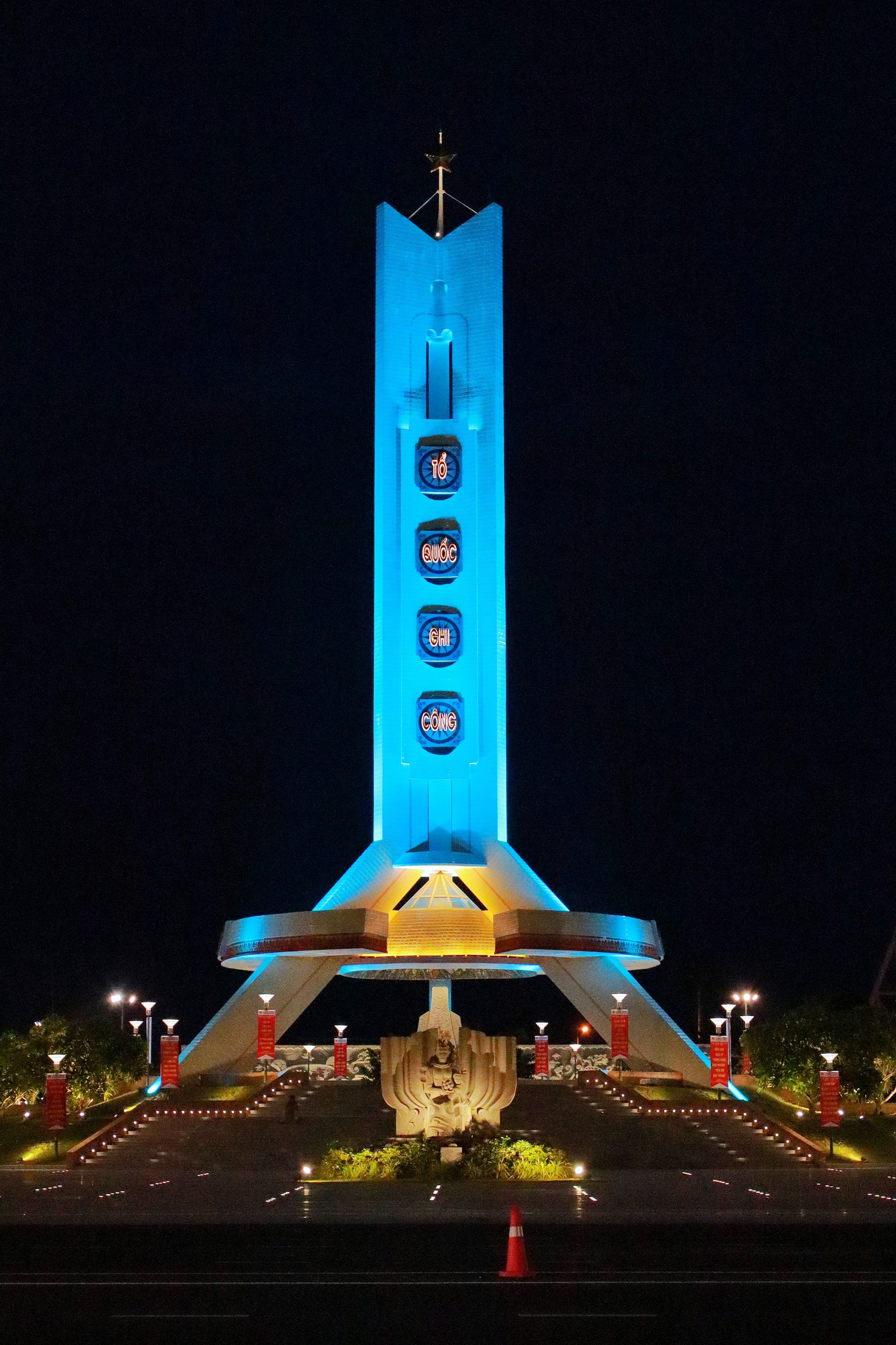Sculpture in urban spaces
In the evolution of urban architecture, sculptures play a pivotal role in shaping public spaces and contributing to the cultural identity of a city. However, this integration is not always straightforward, as improper execution can lead to landscape conflicts or diminish the value of the artworks.
 |
| The Peace Monument, one of the eight outdoor sculptures in Da Nang. |
Ensuring harmony
Da Nang is home to eight outdoor sculptures, including the city’s Peace Monument, the majestic Thanh Khe Valiant Mother Monument, the statues of the distinguished figures Le Van Hien and Ho Xuan Huong, the 'Me Au Co' (Mother Au Co) Statue, the ‘Dat lanh chim dau’ (Birds nest on good land) sculpture, the APEC Sculpture Garden, and the pavement area along Bach Dang Street.
Nevertheless, many believe that this number is insufficient to create an impressive and distinctive artistic identity for Da Nang. The city requires significant changes to achieve a harmonious architectural and sculptural landscape. This necessitates comprehensive investment in urban planning and the redesign of public spaces, beginning with thorough surveys and evaluations of the existing sculptures to develop improvement and optimisation solutions.
Mr Ho Dinh Nam Kha, former Chairman of the Da Nang Fine Arts Association, has suggested that statues, monuments, and grand murals serve as highly symbolic artistic creations, encapsulating history and culture through their shapes and structures. He noted that establishing significant urban landmarks through appropriately scaled monuments would help distinguish Da Nang from other cities, effectively making a “city of sculptures”.
He emphasised that these monuments should represent historical, cultural, and artistic significance tailored to each area of the city rather than being uniformly grand.
According to him, introducing more sculptures into urban spaces could also harness the creative potential of local and international sculptors through workshops or annual competitions.
Given Da Nang's status as a tourist and event city, it is crucial to ensure the necessary aesthetic elements. Initially, the city should develop a roadmap that harmonises the elements of sculpture, planning, and architecture. In other words, integrating sculptures into the urban landscape effectively requires close collaboration between urban planning experts, architects, and artists. New projects should not only create artistic highlights but also align with the overall space and aesthetic considerations for the community.
Mr Kha pointed out that Da Nang currently lacked large-scale stone art spaces and did not have any monuments serving cultural or tourism activities, nor plans to rejuvenate stone artworks along the Han River. To enhance Da Nang's urban architecture, creating green spaces and public areas featuring sculptures was essential, he added.
Parks, squares, and riverside areas showcasing artistic works can provide relaxation for residents and tourists, allowing them to enjoy green environments and fresh air. Thus, combining art with nature can create vibrant, harmonious, and aesthetically pleasing urban spaces.
An experienced “Chief Engineer” is in need
Outdoor sculptures or sculpture gardens are community art projects that create unique identities for different areas and cities.
The sculptor Dinh Gia Thang who is the creator of several valuable sculptures has asserted that an interdisciplinary approach is crucial to ensure that the sculptures possess aesthetic value while fitting into the urban context. This requires close cooperation among urban planning experts, architects, and sculptors. Urban planners ensure the sculptures are harmoniously integrated into the overall landscape, while architects must design display spaces that accentuate the artistic value of the works, creating unique focal points in the city.
As the leading artists, sculptors must create beautiful pieces with cultural and architectural significance that reflect the spirit and identity of the locality.
Moreover, to ensure sustainable development, long-term guidance from management authorities is indispensable. He stated that a comprehensive plan for sculpture in urban spaces is necessary to clarify development goals and trends. This plan should identify suitable locations for sculptures and establish criteria for selection and maintenance, ensuring the works remains in optimal condition over time. For this to succeed, Da Nang needs a “chief engineer” with knowledge of sculpture, fine arts, and architecture, as well as an understanding of the city’s culture and history, so that artistic creations are not overshadowed by architectural developments. Only then can artistic sculptures fully realise their aesthetic roles within community life, as he illustrated.
Recognising the significance of sculptures in urban development, Da Nang approved the project “Development of the Outdoor Sculpture System in Da Nang by 2025, with a vision towards 2030” in 2021, aiming to establish a high-quality outdoor sculpture system across districts, wards, and communes that aligns with architectural and environmental considerations while enhancing political, economic, cultural, and social values. The outdoor sculptures will be strategically placed in parks, squares, scenic corridors, walking paths, and public areas, while historical works will be situated at relevant event locations.
Thus far, the municipal Department of Culture and Sports has collaborated with the local Department of Planning and Investment and other relevant entities to secure funding and suitable land for upcoming implementation.
Mr Ha Vy, Deputy Director of the Da Nang Department of Culture and Sports, has remarked that sculpture is not merely a tool for beautifying urban spaces but also a medium for conveying cultural, historical values and educating the community. Thus, establishing an outdoor sculpture system serves to honour, commemorate, and educate about historical traditions while enriching the cultural heritage. This will create a sculptural space and a cultural, artistic environment that reflects the cultural identity of Quang land, catering to the spiritual needs of both locals and international visitors.
To achieve these objectives, Da Nang should organise events, seminars, and sculpture exhibitions to encourage creativity and innovation within the sculpture sector. Only through comprehensive investment and the engagement of experts, architects, artists, and the community can Da Nang aspire to become a modern, civilised city rich in cultural identity.
Reporting by TIEU YEN - Translating by TRUC VY